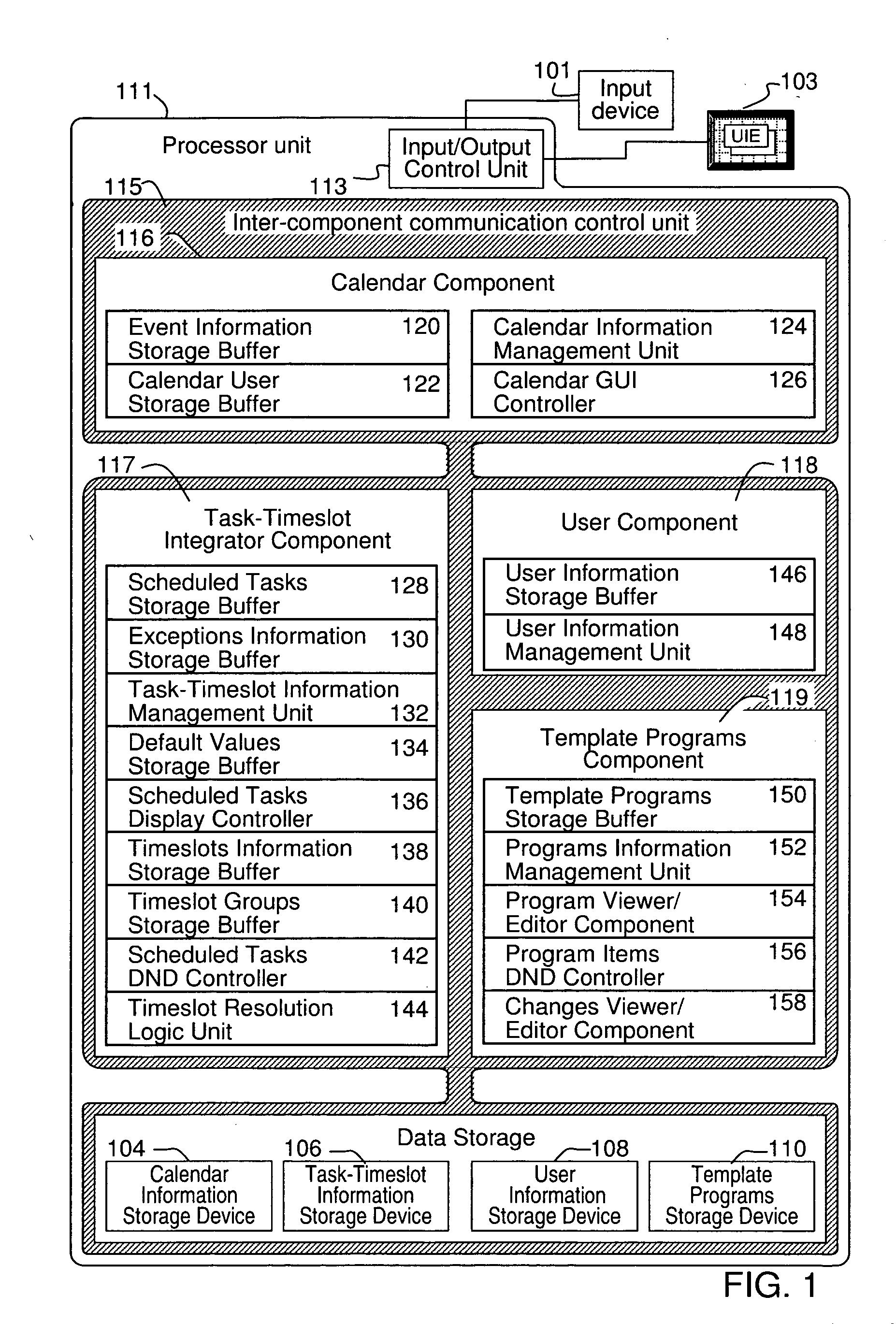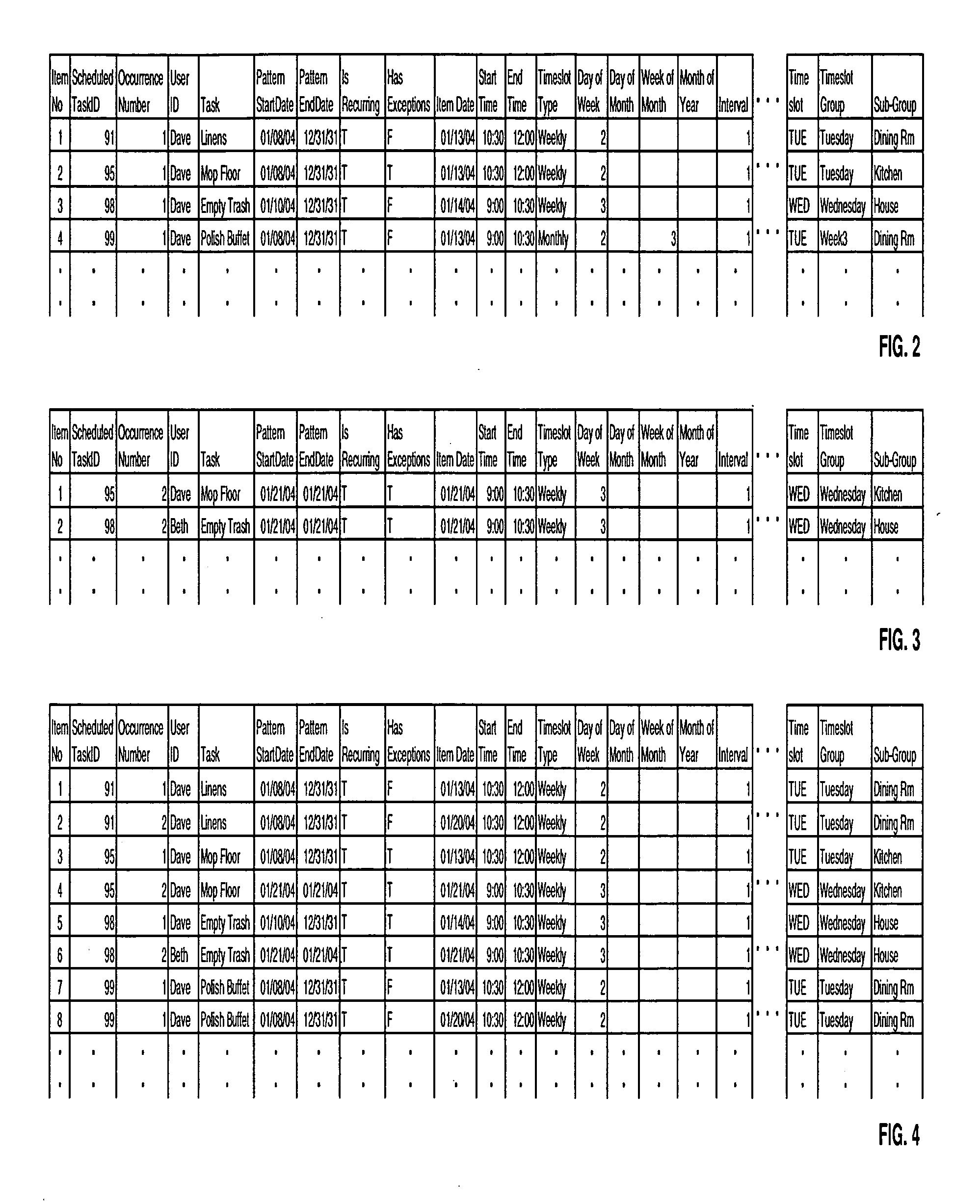Grouping and displaying multiple tasks within an event object of an electronic calendar
a task and event object technology, applied in the field of grouping and displaying multiple tasks within an event object of an electronic calendar, can solve the problems of cumbersome workaround management for more than a small number of tasks, inability to allow the user to specify start and end times, and high program change costs,
- Summary
- Abstract
- Description
- Claims
- Application Information
AI Technical Summary
Problems solved by technology
Method used
Image
Examples
second embodiment
[0266] Description of Second Embodiment
[0267]FIG. 25 is a diagram showing the configuration of a schedule management system according to a second embodiment of the invention wherein many of the structures represented in the preferred embodiment are integrated with structural elements of an electronic calendaring system. Under the second embodiment, the schedule management system includes the input device 101 such as a pointing device for inputting position information, the display unit 103, a calendar information storage device 1004, the user information storage device 108, a template programs storage device 1010, and the processor unit 111.
first embodiment
[0268] The calendar information storage device 1004 stores event information, exceptions information, and scheduled tasks information as shown in FIGS. 26, 27 and 28 respectively. From the event information, exceptions information, and scheduled tasks information as shown in FIGS. 26 to 28 it is possible to develop information equivalent to the scheduled tasks information under the first embodiment as shown in FIG. 9. The event information as shown in FIG. 26 provides a definition of a particular recurrence pattern for a period defined by the PatternStartDate and PatternEndDate fields. The values in the PatternStartDate and PatternEndDate fields of the event information as shown in FIG. 26 will be calculated as the earliest PatternStartDate value and the latest PatternEndDate value respectively among associated scheduled tasks information items. When the Boolean HasLinkedTask field holds a value of “True”, it indicates that the particular item of event information as shown in FIG. 2...
PUM
 Login to View More
Login to View More Abstract
Description
Claims
Application Information
 Login to View More
Login to View More - R&D
- Intellectual Property
- Life Sciences
- Materials
- Tech Scout
- Unparalleled Data Quality
- Higher Quality Content
- 60% Fewer Hallucinations
Browse by: Latest US Patents, China's latest patents, Technical Efficacy Thesaurus, Application Domain, Technology Topic, Popular Technical Reports.
© 2025 PatSnap. All rights reserved.Legal|Privacy policy|Modern Slavery Act Transparency Statement|Sitemap|About US| Contact US: help@patsnap.com



